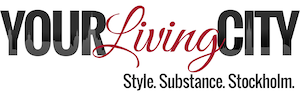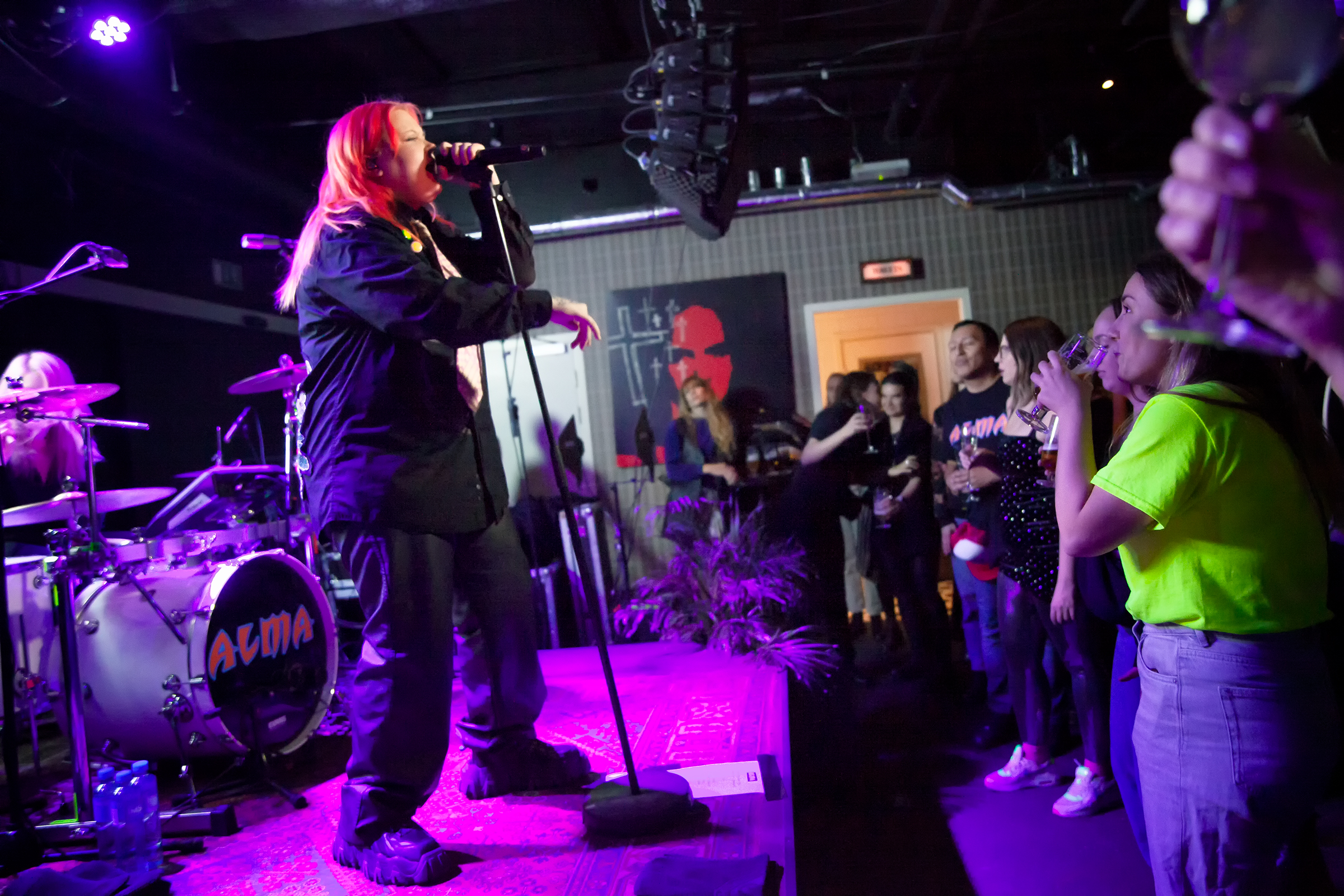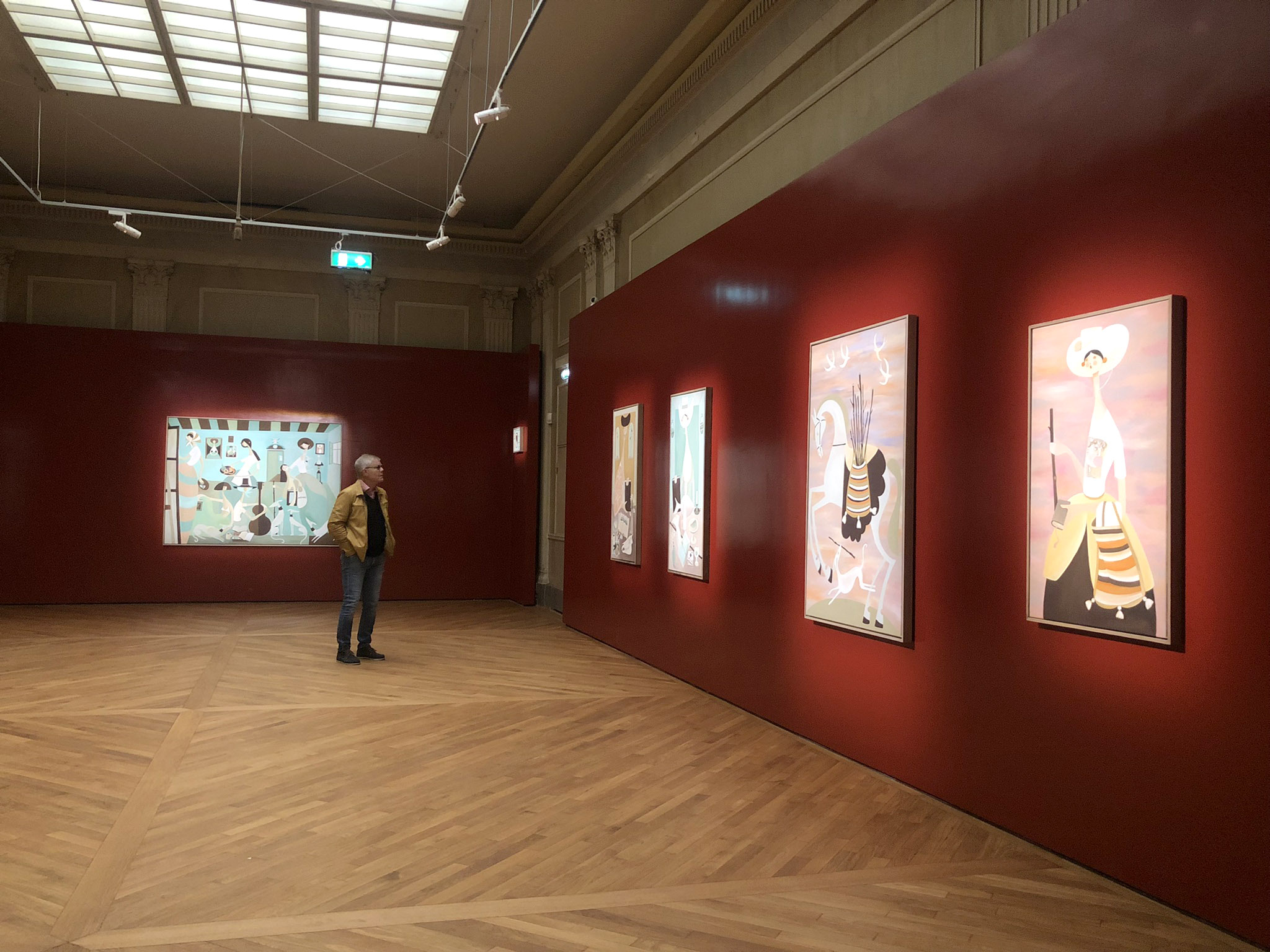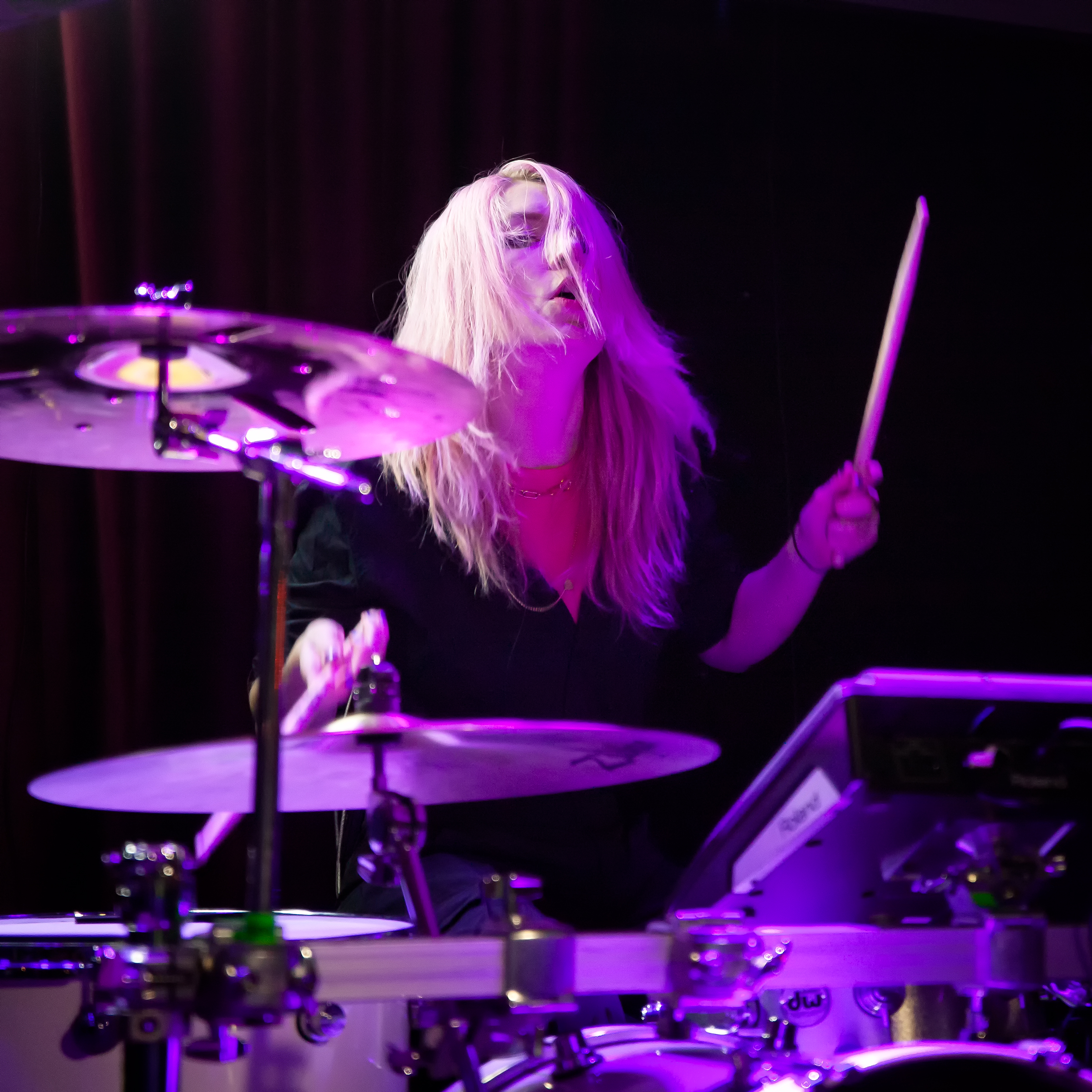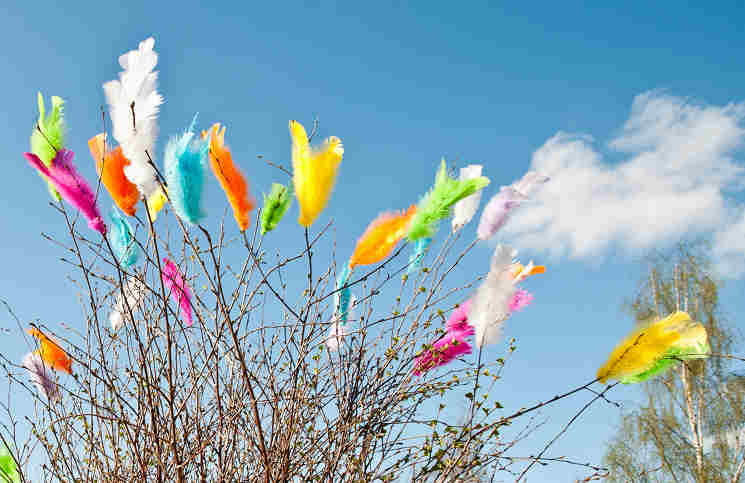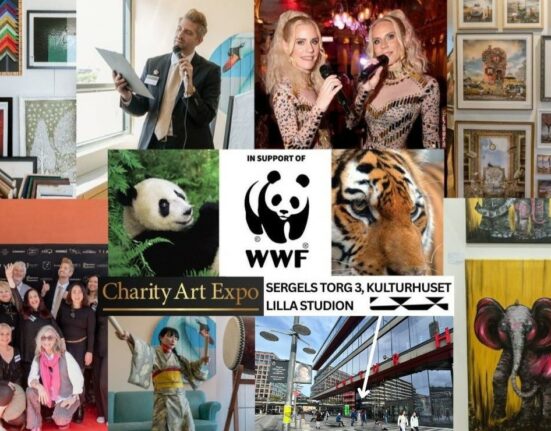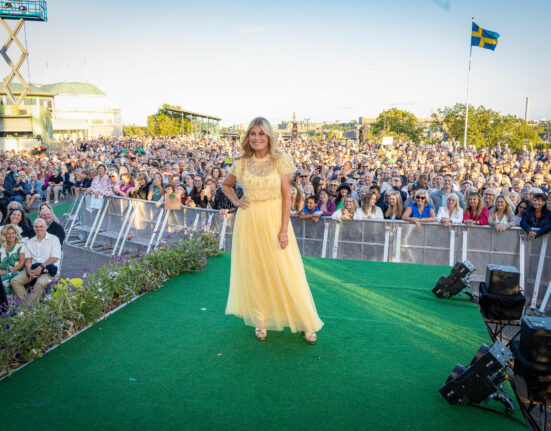Spring has sprung! Or maybe not quite yet? No matter the weather, there’s really no shortage of interesting Swedish traditions to enjoy this month. We have laughs, we have eggs, we have chocolate AND we have bonfires around which to hug our loved ones or meet new…As Swedish traditions go, THIS month is one of the best!
April Fool’s Day: Tuesday 1st April
I’m sure we don’t need to tell you: keep an eye tomorrow on the news for April Fool’s jokes. Your in-laws might remember this 1962 classic: SVT reported that you could easily use your old black-and-white TV to watch your favourite shows in colour – simply by putting a piece of pantyhose over the set! At YLC, we actually know someone who fell for it…
Tiburtiusdagen: 14th April
If silly jokes are too much for you to bear (sorry, this is a pun,you’ll get it later), you can always look forward to Tiburtiusdagen instead. According to Swedish traditional folklore, it’s the day when the summer begins – and when BEARS (see – you got it now) awaken from their winter snooze and stumble out into the world. Why not spend the day at Skansen, the world’s oldest open-air museum and Stockholm’s only zoo, and see if you can spot a brown bear or two?
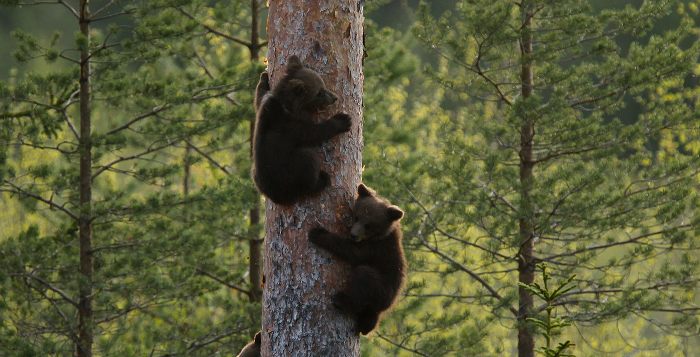
Påsk (Easter)
Of course, Easter is one of the most important events in the Christian calendar, marking the death and resurrection of Christ. The origins of most of the festivities observed by Swedes at this time take their inspiration from the religious event, even if many Swedes don’t practise the faith any more. Easter runs over several days in Sweden, each one with a different significance and tradition:
Dymmelonsdagen 16th April
Dymmelonsdagen is the Wednesday before Easter and takes its name from the wooden sticks, dymblar, that replace the metal clappers of the bells on this day in Scandinavia. The idea is to give as subdued a tone as possible; an indication that it is Holy Week and Good Friday is approaching.
Skärtorsdagen (Maundy Thursday) 17th April
Skär comes from an ancient Swedish word for ‘pure’ or ‘clean’, said to refer to Jesus washing his disciples’ feet before the Last Supper. The day is a celebration of the Eucharist in the Christian calendar, but for pagans, it is also the day on which witches celebrate their sabbath with the devil. From this has sprung a fun custom to dress children up as Påskkärring, Easter hags, reminiscent of English Halloween. The comparison is apt since a Swedish version of trick-or-treating DOES occur, with the children going from house to house in the neighbourhood, presenting the occupants with paintings and drawings in the hope of getting sweets in return. Dressed in discarded clothes, brightly-coloured head-scarves and painted rosy cheeks, they’re probably the cutest witches you’ll see this half of the year.(Worried your kids will want to go – don’t fret we have you covered!)
Långfredagen (Good Friday) 18th April
Good Friday commemorates the crucifixion of Jesus and is a national holiday in the Swedish calendar. The church service on this day is unique; there are no hymns, organ music or expressions of joy and the alter will be empty, save for five red roses, symbolising Christ’s wounds on the cross.
As Easter also marks the first weekend of spring, many Swedes take the opportunity to take their first trip out to their country house. A spring clean may also be in order after months of not being inhabited!
Påskafton (Holy Saturday) 19th April
From a church perspective, there are no services held until at least the late evening, if not midnight. However, the big meal for Easter tends to be eaten on this night in Sweden, rather like at Christmas Eve. The parallel is made complete with the ubiquitous ‘Julmust‘ now repackaged for Påsk – clearly a ‘must’ at any Swedish table!
Eggs are hugely popular, both for their religious significance, (eggs were traditionally prohibited over Lent) and their seasonal import (hens lays more eggs as the days lengthen, so eggs signify that spring is here). As a symbol for new life, they make an appearance on the table too, along with Janssons frestelse, Jansson’s temptation, sill, salmon and more recently lamb. Eggs also appear in cardboard form all over Sweden, filled with sweet treats for children.
In western Sweden, bonfires are lit on Holy Saturday and are believed to scare those witches coming back from their sabbath celebrations. In some areas, this is the day when the children dress as Easter hags and trick or treat their neighbours.
Påskdagen (Easter Sunday) Sunday 20th April
Easter Sunday is the most important day in the Christian calendar, since it marks the reserrection of Jesus and the service is joyful, with the alter covered in white cloth and daffodils. For secular Sweden, it’s a day to eat up all those leftovers from yesterday’s Påskbord, have fun with friends and family and prepare for the journey back from the summer-house on Monday, the last national holiday for this festival.
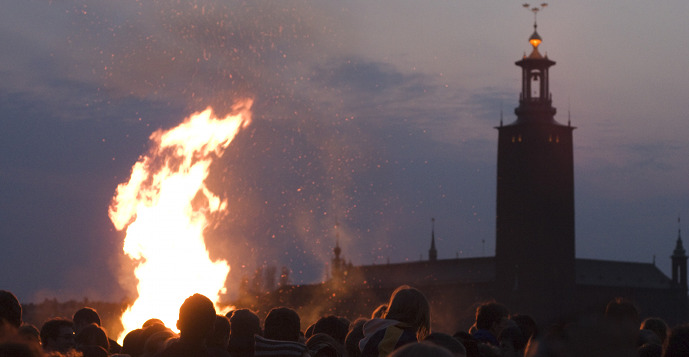
Valborgsmässoafton (Walpurgis Night): 30th April
The month comes to a close with a big bonfire to welcome spring. Valborgsmässoafton, or Walpurgis Night, has been celebrated in Sweden since pre-Christian times. The bonfires were once lit to scare off predators such as foxes before the livestock were let out to graze. Now they’re mostly about renewal and celebrating the arrival of spring. Singing and dancing, candy and games for the kids, and a lottery with prizes are often part of the celebration.
Check Your Living City’s guide to Walpurgis Night coming soon — more than likely, there’s a bonfire happening in your local park, with a procession of torchbearers to light the blaze. On university campuses, Valborgsmässoafton is a day for parties, drinking, song and dance. Uppsala is the place to be if you’re a student – the day’s activities include everything from a champagne (and porridge) breakfast, a herring lunch (whatever that may be) to a raft race down the Fyrisån river. Here’s to spring!
Images:Lola Akinmade Åkerström/Håkan Vargas/Ola Ericson/Imagebank Sweden
